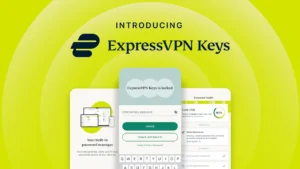
Choosing the right platform for your Minimum Viable Product (MVP) is a crucial decision that shapes the trajectory of your digital product. Should you launch with a mobile app or a web app? This debate is more than just technical; it involves user behavior, product vision, cost-efficiency, and speed to market.
MVP Development Services are often brought in to guide founders and product teams through this pivotal decision. They bring expertise, user behavior insights, and scalability considerations into the discussion. In this blog, we’ll explore the benefits, limitations, and strategic differences between Mobile and Web MVPs—along with what professional MVP developers usually recommend and why.
Understanding MVP Development
An MVP, or Minimum Viable Product, is the first working version of your product that includes only the essential features. The idea is to release early, test your concept in the real world, gather feedback, and iterate based on user behavior.
Goals of MVP Development:
- Validate assumptions about product-market fit
- Minimize time and financial investment
- Gain early adopters
- Receive actionable feedback
- Attract potential investors or stakeholders
MVP Development Services specialize in identifying the core value proposition and stripping away anything that doesn’t serve initial user validation. The decision of which platform to launch on first—mobile or web—is critical in this lean, feedback-driven process.
Mobile MVP: Pros and Cons
A Mobile MVP is built specifically for smartphones and tablets—usually via native platforms (iOS and Android) or cross-platform frameworks (Flutter, React Native). Mobile apps offer deeper device integration and are tailored for a user base that prefers on-the-go accessibility.
Pros of Mobile MVPs
- Push Notifications for Higher Engagement: Mobile apps can directly notify users, increasing engagement and retention.
- Access to Device Hardware: You can tap into features like camera, location, microphone, accelerometer, biometric authentication, etc.
- Superior User Experience: Native mobile interfaces feel smooth and responsive, providing a premium user experience.
- Offline Capability: Apps can cache data or run offline, improving usability in low-connectivity environments.
- App Store Discoverability: Listing on the Apple App Store or Google Play can help with organic visibility and trust.
Cons of Mobile MVPs
- Higher Development Costs: You’ll typically need separate builds for iOS and Android, increasing development time and cost.
- App Store Approval Delay: Launching requires passing store guidelines, which can take several days and may require revisions.
- Slower Update Cycle: Every update must go through store reviews, slowing down iteration cycles.
- Limited Testing Audience: Early adopters must download and install your app, which can be a barrier compared to web MVPs.
Web MVP: Pros and Cons
A Web MVP is developed for browsers and can be accessed instantly via a URL. It’s usually the go-to for early product validation due to lower costs and rapid deployment.
Pros of Web MVPs
- Faster Launch and Iteration: Changes can be deployed in real-time without needing store approvals.
- Universal Accessibility: Accessible across devices—desktops, laptops, tablets, and mobile browsers.
- Lower Cost: You only need to build once for all platforms, saving both time and budget.
- Better for Complex UI: Interfaces that require dashboards, tables, or drag-and-drop functionality work better on web.
- Simplified Testing: Users can access your MVP by clicking a link—no downloads required.
Cons of Web MVPs
- Limited Native Features: Device access (like camera or GPS) is restricted and sometimes unavailable.
- Weaker Engagement: Web apps can’t leverage native notifications without added service workers.
- No Offline Access by Default: Unless built as a Progressive Web App (PWA), users need internet access to use your product.
- UI/UX Limitations: While responsive designs help, the experience might not match the polish of native mobile apps.
Key Differences Between Mobile and Web MVPs
| Feature | Mobile MVP | Web MVP |
| User Experience | Rich, native UI | Simple, responsive UI |
| Development Cost | Higher | Lower |
| Deployment Time | Slower (store approval) | Faster |
| Platform Reach | iOS/Android | All internet-enabled devices |
| Push Notifications | Yes | Limited (PWA only) |
| Offline Access | Yes | No (unless PWA) |
| Maintenance | Store updates required | Instant updates possible |
| Device Features | Full access | Limited access |
What MVP Development Services Typically Recommend
Based on the industry vertical, target audience, and product strategy, MVP Development Services provide tailored advice. Here’s how most agencies approach this decision:
1. Analyze the User Persona
If your target users are mobile-first (e.g., gig workers, students, travelers), a mobile MVP is usually recommended. For B2B tools or SaaS platforms, a web MVP is more practical.
2. Understand the Product Use Case
- Does your product need GPS, camera, or biometric login? → Go mobile.
- Does your product require multi-step forms, admin dashboards, or charts? → Go web.
3. Evaluate the Timeline and Budget
If you’re bootstrapping or aiming to validate fast, web MVPs are the top choice due to quicker development cycles and reduced costs.
4. Assess Marketing and Distribution
Web MVPs can be marketed more easily via URLs and email links. Mobile MVPs benefit from app store exposure but need stronger promotion and onboarding.
Decision-Making Framework: Mobile or Web First?
Use the following matrix to help guide your decision:
Choose Mobile MVP If:
- Your target audience lives on mobile devices
- You need access to camera, GPS, or accelerometer
- Offline functionality is a priority
- You plan to invest heavily in engagement and retention from the start
Choose Web MVP If:
- You’re in early-stage ideation or market validation
- You have a limited budget or time
- Your product requires desktop-friendly interfaces
- You need to iterate rapidly with minimal deployment friction
Real-World Examples
Instagram – Mobile First
Instagram’s MVP focused solely on iOS to test the photo-sharing concept. Once they achieved traction, they expanded to Android and later to web.
Airbnb – Web First
Airbnb’s MVP was a basic web platform allowing homeowners to list rooms. It validated the concept before evolving into a multi-platform experience.
Dropbox – Demo Video as MVP
Rather than a product, Dropbox used a web video MVP to explain the idea. When users showed interest, they built out the actual service.
Conclusion
Choosing between a mobile or web MVP is not just a tech decision—it’s a business strategy. The platform you choose affects your budget, user acquisition, testing efficiency, and long-term scalability.
MVP Development Services guide this decision by understanding your audience, goals, and product scope. While mobile MVPs offer deeper engagement and device access, web MVPs win in cost, speed, and simplicity.
For most startups, the answer lies in starting lean with a web MVP, validating your idea, and then investing in a mobile version once product-market fit is clear.
FAQs
1. Is it cheaper to build a web MVP than a mobile MVP?
Yes, generally. Web MVPs involve one codebase and don’t require app store deployments, making them more affordable.
2. Can I convert a web MVP into a mobile app later?
Yes. Many startups begin with a web MVP and later use cross-platform frameworks to expand into mobile.
3. How long does it take to develop an MVP?
On average, 6–12 weeks depending on feature complexity and platform choice.
4. What is a PWA, and is it a good alternative?
A Progressive Web App (PWA) offers app-like features on the web, including offline support and push notifications—ideal for hybrid strategies.
5. Do MVP Development Services offer both mobile and web builds?
Yes. Leading agencies provide end-to-end services, helping you prioritize and even transition between platforms as your product grows.







